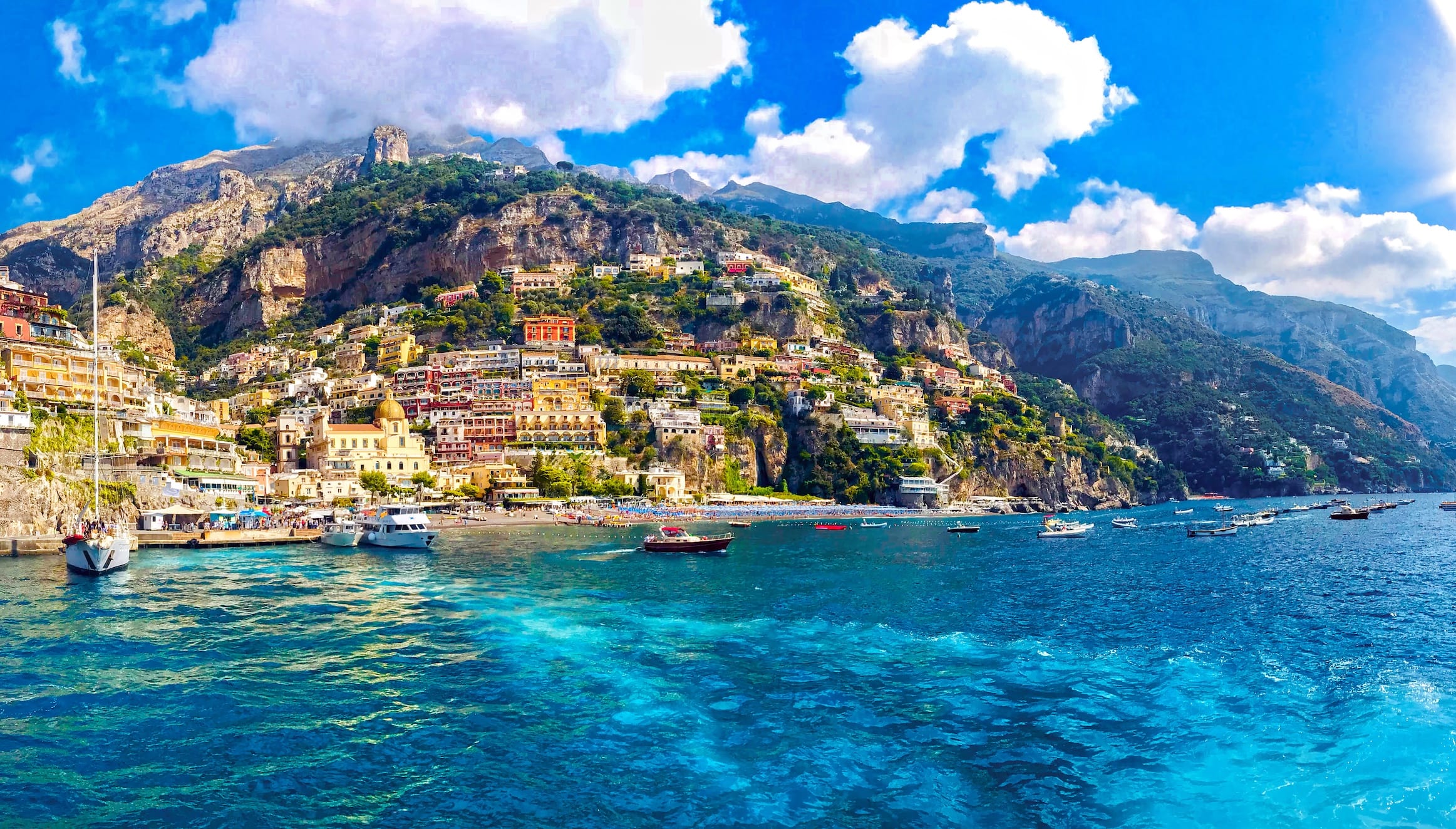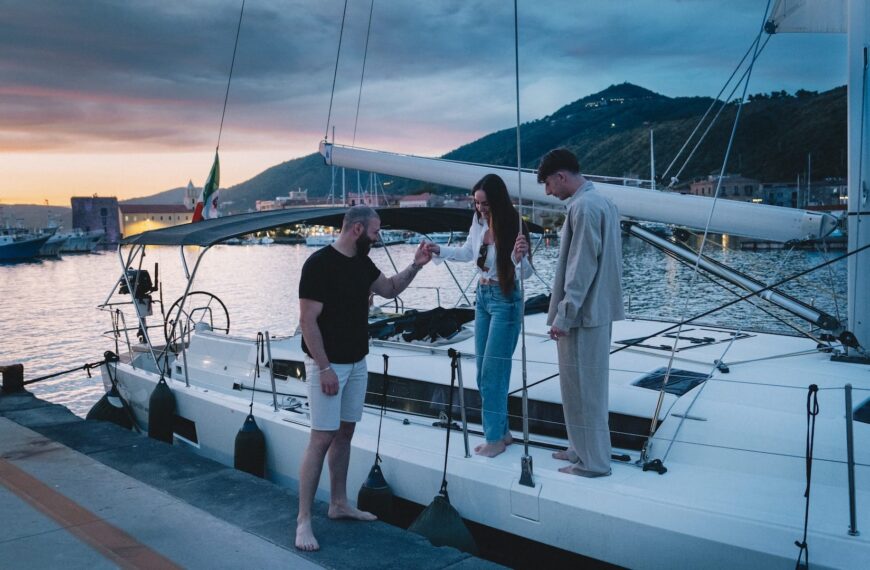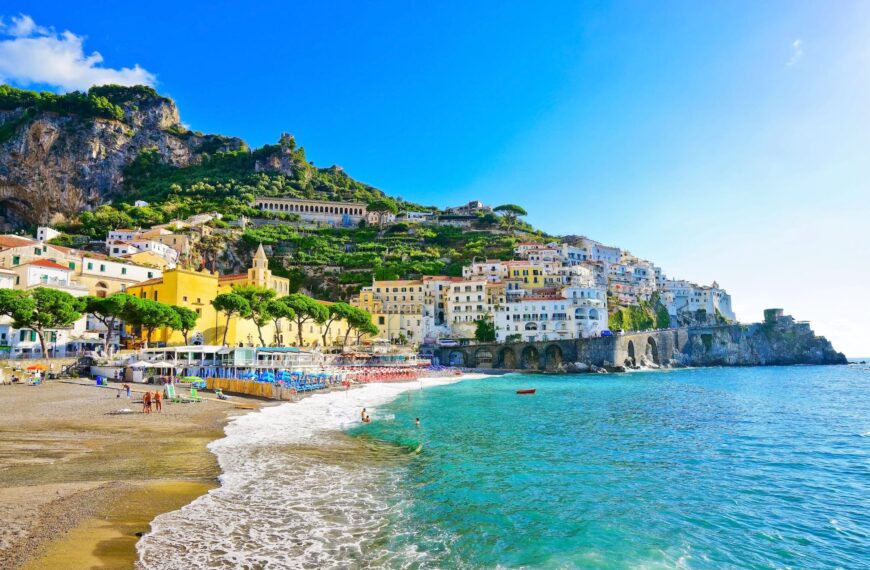With postcard-perfect landscapes, artistic treasures and hidden viewpoints, the famous Amalfi Coast destination never ceases to amaze.
What was originally built as a deterrent became, on the contrary, a draw. When not an outright invasion, peaceful at that. That seems to have been the case in Positano, whose steep and narrow alleys clinging to the sheer coastline have become its signature feature—and the very reason people visit. Originally, the town’s unique layout enabled residents to defend themselves from enemy attacks.
After being plundered by the Pisans in 1268, those living near the harbor wisely decided to move higher up, building homes on the rocks and equipping them with fortifications and watchtowers. An urban layout so intricate it discouraged any would-be invader.
From the Church of Santa Maria Assunta to Spiaggia Grande
Today, those myriad steps and lanes weaving through the colorful buildings form an irresistible attraction for visitors in Positano, whether arriving by land or—lucky ones—by sea, enjoying the sight from afar. Founded around the 10th century on a Benedictine abbey, the old town has become the jewel we all know, adorned with numerous treasures, not all easily discovered.
Before joining the flow of tourists—drawn by the generous climate that keeps the place lively all year—you’d better understand its layout, so you don’t miss a single neighborhood. You’ll see that it’s not just about the famous Church of Santa Maria Assunta; its dome, adorned with green, blue and yellow majolica tiles, is an almost mandatory starting point.
To immerse yourself in the spirit of a place is also to relive the emotions of those who experienced it before us. Whether it’s a postcard or a social‑media snap, the iconic church by the beach should be visited, admired and photographed—as millions have already done. That said, the shot works best from a distance, since the facade hides the famous dome at the rear.
Meanwhile, the terraced churchyard overlooks the sea, gifting a coastal view that’s quite a spectacle. Turning your back on that and walking through the church doorway, you’ll discover a classic interior of columns topped with Ionic capitals, and the famous Byzantine icon of the Madonna and Child.
Legend says Positano took its name from this image: a voice shouting “posa, posa” (“put it down, put it down”) supposedly told sailors to leave the icon there before continuing their journey interrupted by calm seas.
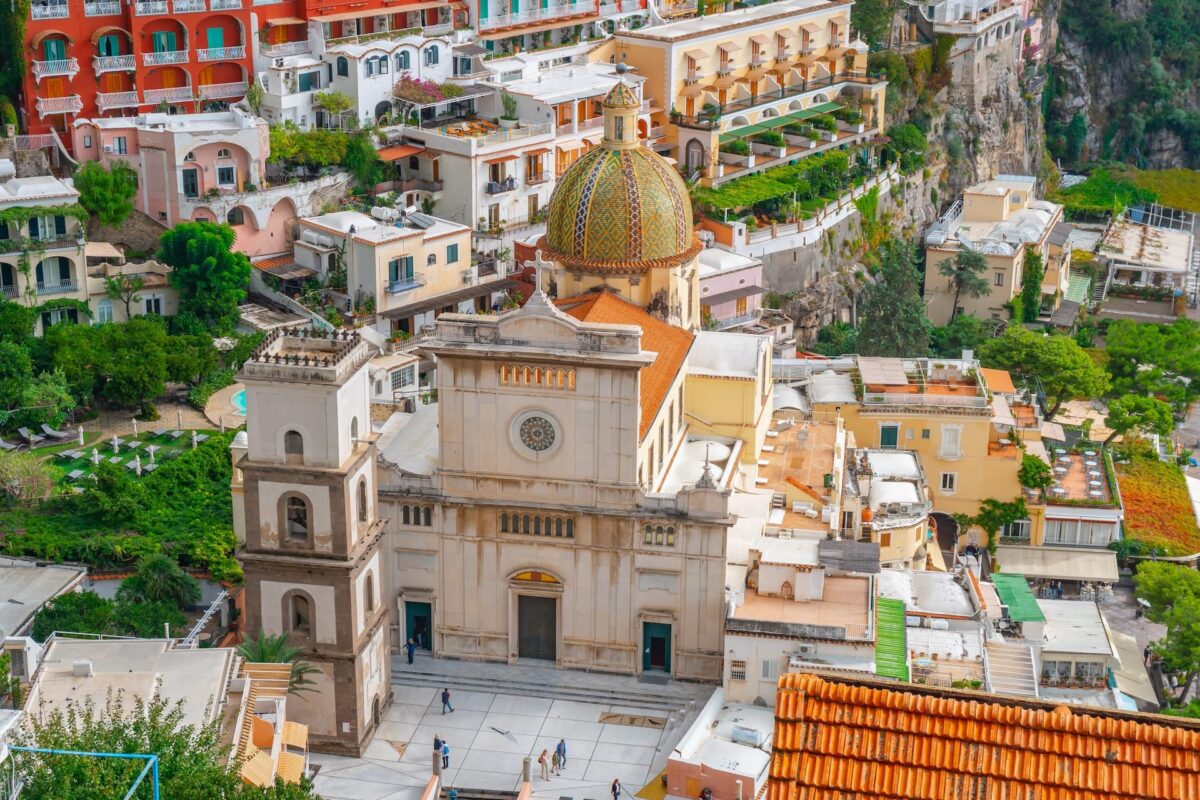
In the historic center, between shopping and color
Reaching this first stop means walking through the area between Piazza dei Mulini and Spiaggia Grande, one of the town’s twelve districts and undoubtedly the most visited. It’s dotted with shops and artisan boutiques, colorful displays and blooming bougainvillea, lemon trees, plus traditional cotton and hemp clothing.
Together with the local aesthetic, the “Positano Style” has become synonymous with this surprising place and its evolution from fishing village to exclusive tourist destination.
It shouldn’t be forgotten that only since the early 20th century—thanks to elite travelers like artists, writers, and high‑society figures arriving here and on the nearby exclusive Li Galli Islands—has Positano emerged as a tourist destination. And, from the 1950s onward, as a seaside spot, local crafts evolved from simple jute mats to beach and evening wear.
Well stocked with colorful souvenirs—and ideally a pair of handcrafted sandals, another point of local pride—you can continue exploring even more unmissable parts of town. One lies just beneath the church you visited.
The Roman villa beneath the church
It’s the MAR, the Archaeological Museum of Positano. Though a relatively recent addition to tourist itineraries, it was inaugurated only in 2018. The museum occupies an ancient Roman villa about ten meters underground beneath the oratory of Santa Maria Assunta. An imperial‑era residence buried under the Vesuvius eruption of AD 79, along with Herculaneum and Pompeii, now transformed into an exhibition space.
Among Roman-era artifacts and historical finds, it’s possible to admire a stunning frescoed wall—the sole example of Roman wall painting on the Amalfi Coast.
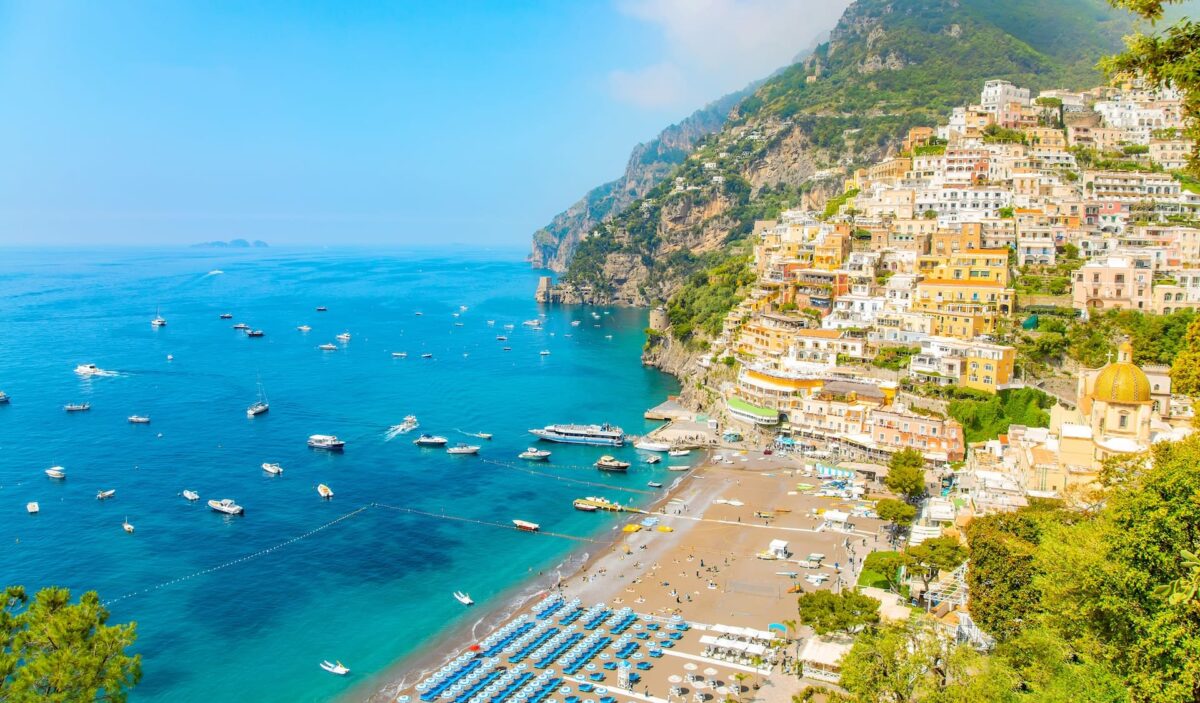
A dip in the sea…and in sophistication
After emerging from the crypts and underground rooms of a fascinating past, return to the present of sun, sea and romantic strolls to enjoy it all. Already admired from above, Marina Grande—or simply Spiaggia Grande—is just steps from the church of Santa Maria Assunta.
Here you’ll find equipped beach clubs alongside a small free beach area, but above all the heart of Positano’s glamorous lifestyle, where most vacationers gather. If you prefer quieter spots, you can stroll to the more peaceful Fornillo Beach via a path starting at the far end of Marina Grande’s pier.
Look out for a natural sea cave and the colorful houses climbing toward the upper part of town.
Climbing toward the upper town
Often chosen by artists and painters for its peace and unbeatable views, this area is crossed by stairways and paths leading to the upper town. Less frequented by the crowds, Positano’s high‑altitude neighborhoods were where residents took refuge when watchtowers signaled approaching danger.
Today, well protected by elevation, these villages include Chiesa Nuova, Montepertuso, Nocelle and Liparlati. Among them, the oldest is Chiesa Nuova—despite its name—dating back to the 11th century.
Called “new” because fully restored in the 1700s, legend says it was once a mosque used by Arab merchants in the days of Eastern trade. More plausible is its origin in the Basilian monastic tradition—justified by its oval floorplan.
Its tiled flooring resembles that of churches elsewhere on the coast, while its three‑story bell tower with a pointed roof stands beside the sacristy, built with two rooms one above the other and a cistern below. Surrounding it are Positano’s oldest houses.
Montepertuso, Nocelle and Liparlati
The hamlet of Montepertuso lies beneath its namesake mountain, which, according to legend, was “pierced” by the Madonna’s finger. To reach it on foot, take the trail that leads to the Vallone Porto Oasis, with waterfalls, wildlife and rare plants. Alternatively, you can ride the small bus that climbs the road.
Just below the “pierced mountain” you’ll also find the tiny hamlet of Nocelle. Until a few years ago, only reachable on foot via a trail up the mountainside or a 1,500‑step staircase from Arienzo Beach, Nocelle is the end‑point of the famous Sentiero degli Dei (Path of the Gods), the shepherds’ trail from Agerola offering one of the most spectacular views on the coast.
Finally, to escape the bustle of hurried tourists you can climb to the Liparlati district. Frequented mainly by locals and guests in panoramic villas, it’s a great spot to catch your breath away from the busy lower town—perhaps sitting on one of the benches in Piazza Bellina, overlooking the sea from under the cliff.
Alternatively, you can reach the cemetery with views of Capri’s Faraglioni, or visit the small Church of San Giacomo with its original 18th‑century ceramics.

